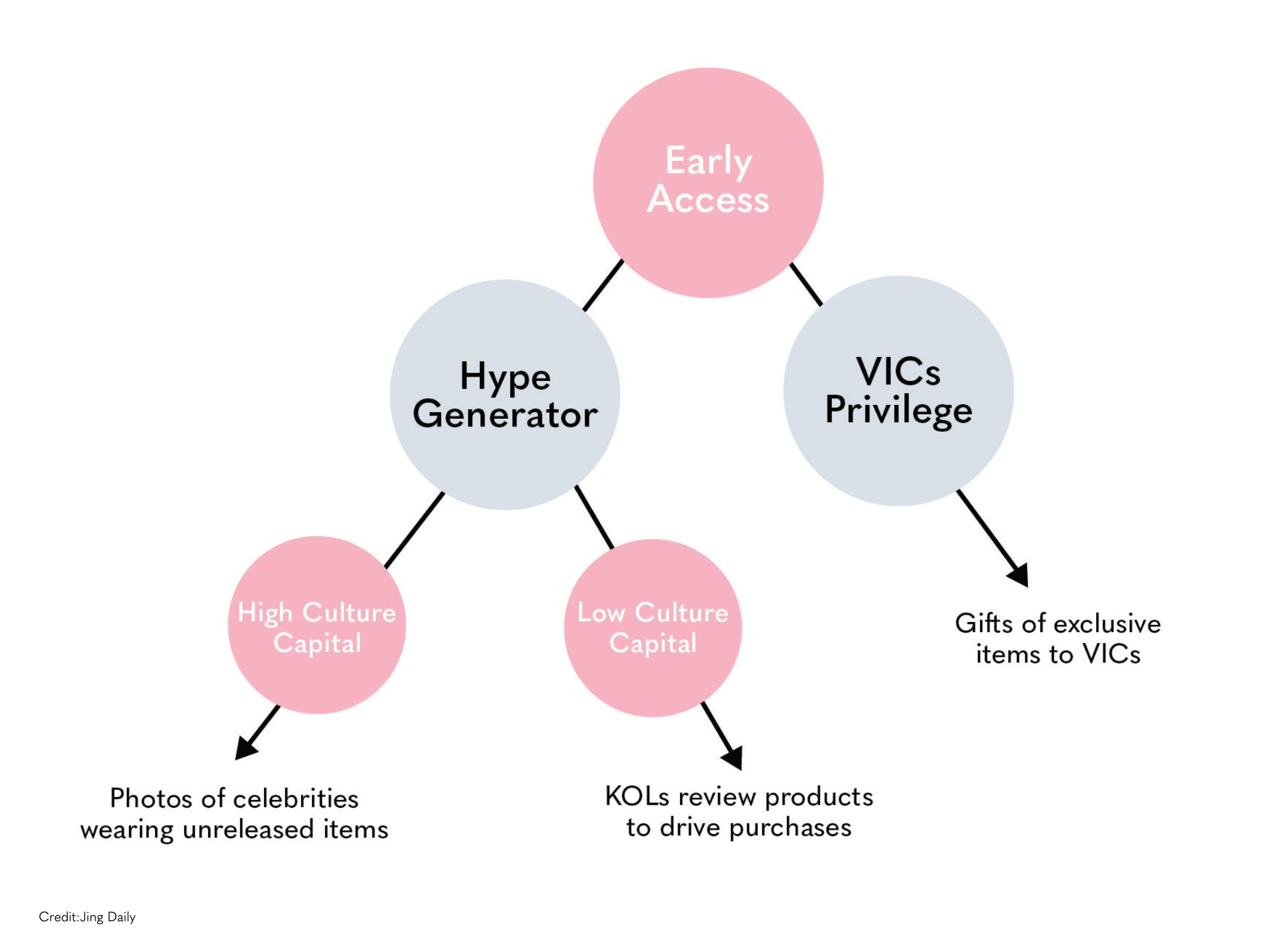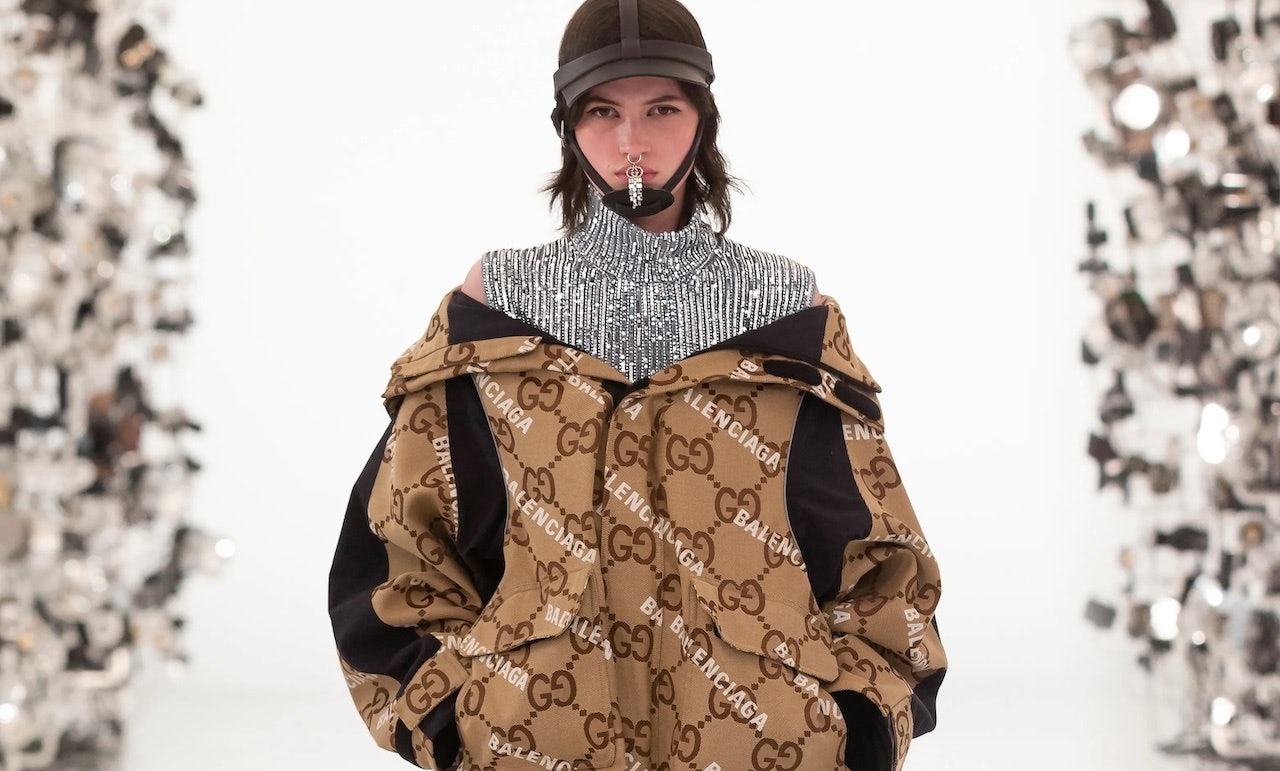The following is an excerpt from Jing Daily’s insight report “The Drop: Understanding Successful Brand Collaborations.” Packed with 45 pages of market research, spotlight interviews with industry insiders and brand executives, and revenue-generating consumer insights, the report is a must-read for anyone interested in understanding how expertly planned drops can drive sales in the critical Chinese market. Get your copy today on our Reports page.#
When and where consumers have access to collaborations is critical. While both factors contribute to a drop’s level of exclusivity, the former allows brands to control the pre-release anticipation, and the latter refers to its accessibility. Offering early or first access to upcoming co-branded products can drive up conversations surrounding their release, once such access is revealed. If a brand’s chosen partner is an artist, their fan base makes them the initial source for such hype; they can utilize the fame of their family and friends to drive engagement surrounding a collaboration months, or even years prior to its launch.
Labels adopt a variety of early access tactics. In China and the West, it is common for beauty brands to grant first access to key opinion leaders (KOLs), allowing them to review and demonstrate the product before it goes on sale. For instance, Estée Lauder gave several Chinese beauty KOLs early access to the Estée Lauder x SHUSHU/TONG limited beauty gift boxes for 2021’s Qixi Festival — China’s traditional Valentine’s Day. On local social media platforms such as Weibo, the KOLs posted pictures of themselves using the makeup and praised the collaboration for its quality and originality. One beauty influencer with almost 3.7 million followers even produced her own 90 second-long promotional video to promote the collaboration, receiving more than 25,000 likes. The same strategy was adopted by the Bobbi Brown x Monopoly collaboration released in fall 2021, in which KOLs created over 75 percent of the original promotional content on Weibo.

Top luxury brands rely far less heavily on private influencers to generate consumer anticipation in China. Instead, they typically grant early access to brand partners or celebrities. For their collaboration, Gucci and The North Face released photos of various Chinese celebrities (many of whom were the former’s brand partners), wearing outfits several days before the collaboration was launched in China (on December 29, 2020, the earliest worldwide). Another Louis Vuitton tie-up, this time with Supreme, was boosted by Chinese idol Lu Han, who acquired a highly sought-after collaboration hoodie before its official drop in China on June 30, 2017. One day before, Lu posted pictures of himself wearing the hoodie on Weibo, which received more than 1.8 million likes.
Beauty and luxury brands use a wide range of first-access strategies as a result of commanding different levels of cultural capital. Beauty brands are relatively prolific in introducing new offerings and conducting cross-brand collaborations, and thus make more of an effort to distinguish their products. The beauty market in China in particular sees fiercer competition than the country’s luxury market, given the simultaneous presence of Chinese, Korean, Japanese, and Western beauty companies. Therefore, beauty influencers play a critical role in explaining and demonstrating the uniqueness of products in detail.
While individually, beauty KOLs have much fewer social media followers than celebrities, in aggregate they are crucial to persuade their followers, who are the targeted consumers of beauty names, to purchase products. In contrast, renowned luxury fashion houses like Louis Vuitton and Gucci command much higher cultural capital, so their collaborations require more hype-assistance to build virality, instead of needing to convince potential customers to purchase. Thus, images of pop idols wearing yet-to-be-released collaborations generally suffice for promotion.
